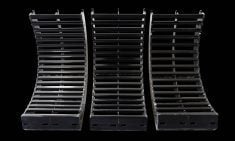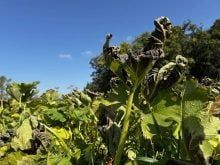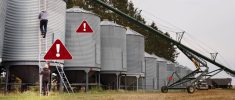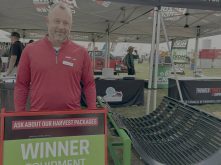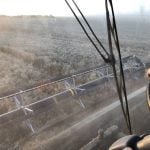Field conditions and an early harvest have elevated the risk of combine fires.
“Certainly the risk is great this year because of the dry conditions,” said Keystone Agricultural Producers farm safety consultant Morag Marjerison. “Across Canada, there have already been some combine fires this year. So it’s definitely something that they should be considering.”
Why it matters: Combine fires are costly, but safety experts say they’re also often preventable.
Read Also
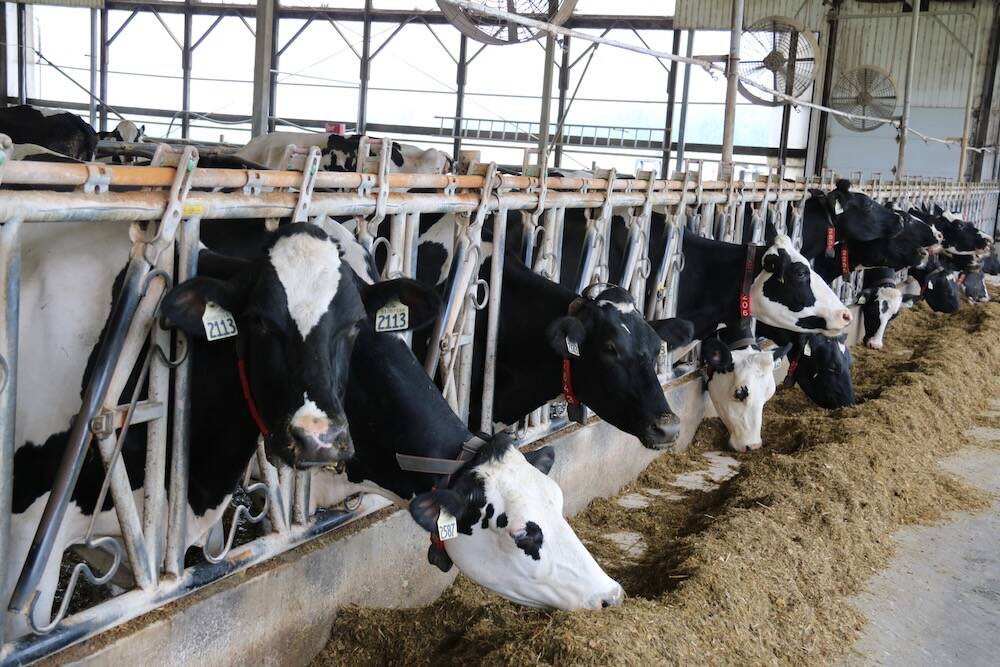
Manitoba flags U.S. mega-dairy plans for international review
Manitoba has been pushing for international review of two proposed North Dakota dairy operations near the Red River. The province says those will add further nutrient loading risk to already-at-risk waterways.
Marjerison said there are a number of common reasons, and understanding those is the first step to avoiding them.
“It can be a multitude of things, from faults in the electrical wiring on the machines to overheating bearings, leaks from the fuel and the hydraulic lines, static electricity, hot exhaust and even small rocks going through the machine creating sparks as they go through,” said Marjerison.
Equipment maintenance
According to a 2019 article in the journal Agronomy, a Spanish survey of combine fires found the blazes mainly originate in four areas. About 32 per cent start in the engine zone, 31 per cent in the cutting bar (where friction can see temperatures reach over 400 C), 18 per cent in bearings and belts and roughly nine per cent in electrical wiring systems.
Risk is reduced if equipment is properly maintained, Marjerison said.
“Ensuring that engine oil and coolant levels are correct is important, as is repairing any leaking fuel hoses, hydraulic hoses, or anything like that. And make sure that the air filters are kept clean so that the engine runs cooler.”
She also urged producers to check bearings and try to spot obvious wiring defects.
“They’re not always easily visible, but sometimes they can be spotted,” she said. “Before beginning harvest, it’s a good idea to clean any old oil and grease off the machine.”
She recommended pressure washing machines before getting underway and ensuring each combine has a fire extinguisher.
“The recommendation for a combine is a minimum of one 10-pound fire extinguisher,” she said, and they must be in good condition.
“I would encourage people, if they haven’t had a look at that fire extinguisher since last year, to have a look at it and check that it hasn’t discharged itself or corroded or anything like that.”
Out in the field
Dust and debris collects on equipment so it’s critical keep machines clean during harvest.
This is normally done with an air compressor when the machine is in the farmyard, but some producers take it further.
“I’ve seen and heard of a lot of people now carrying a leaf blower with them so that, throughout the day, they can blow off the machines out in the field,” said Marjerison.
Of course, one of the big risks associated with combine fires is the potential for spread into surrounding fields. She recommends taking precautions to mitigate that risk.
“Think about having a water supply on hand or keep a cultivator or a disc harrow close at hand so that they can create firebreaks to help suppress a fire.”
End of the day
After long hours in the field, it is likely tempting to park the machine and call it a day, but procrastination will only create more work, Marjerison warned.
“Cleaning that chaff off at the end of the day is better than in the morning, because in the morning we’ve often got heavy dew, which will have caused it all to stick to the machine, so it doesn’t blow off as easily,” she said.
“Sometimes people don’t want that extra chore when they finish, but you can get more of the residue off when it’s dry than when it’s stuck with dew.”
It’s also important to think about where to park machines in the yard.
“Don’t put them straight back in a building just in case the fire breaks out later on,” she said. “Park on non-combustible surfaces and away from buildings, stacks of bales or anything like that to reduce fuel sources.
“We do see farm equipment erupt into flames when it’s just packed up at the end of the day.”
Staying in contact
Communication is another key prevention tool.
“If farms have hired workers, as opposed to the farmer being the person operating the machine, make sure that workers have means of communication with them at all times,” said Marjerison.
Cell phones are great where there’s service, but that is not guaranteed in rural Manitoba. Radios may be a more reliable option.
“Make sure that everybody knows the land description of where they’re working or directions on how to get there,” she said. “If it’s not somebody’s own piece of land, they’re often not entirely clear how to describe where it is.”
If fire breaks out, miscommunication may be costly.
“Talk about whose job it is to do what,” she added. “Who is phoning 911 [in the case of a fire]? Who is letting neighbours know if you’ve got a field alight?”
Marjerison says that, with a little planning, farmers can mitigate the risk of fires. And while some measures may seem elementary, it never hurts to be reminded, especially if there are inexperienced workers involved.
“I think farmers know all of these things. It’s just about taking that extra time.”




